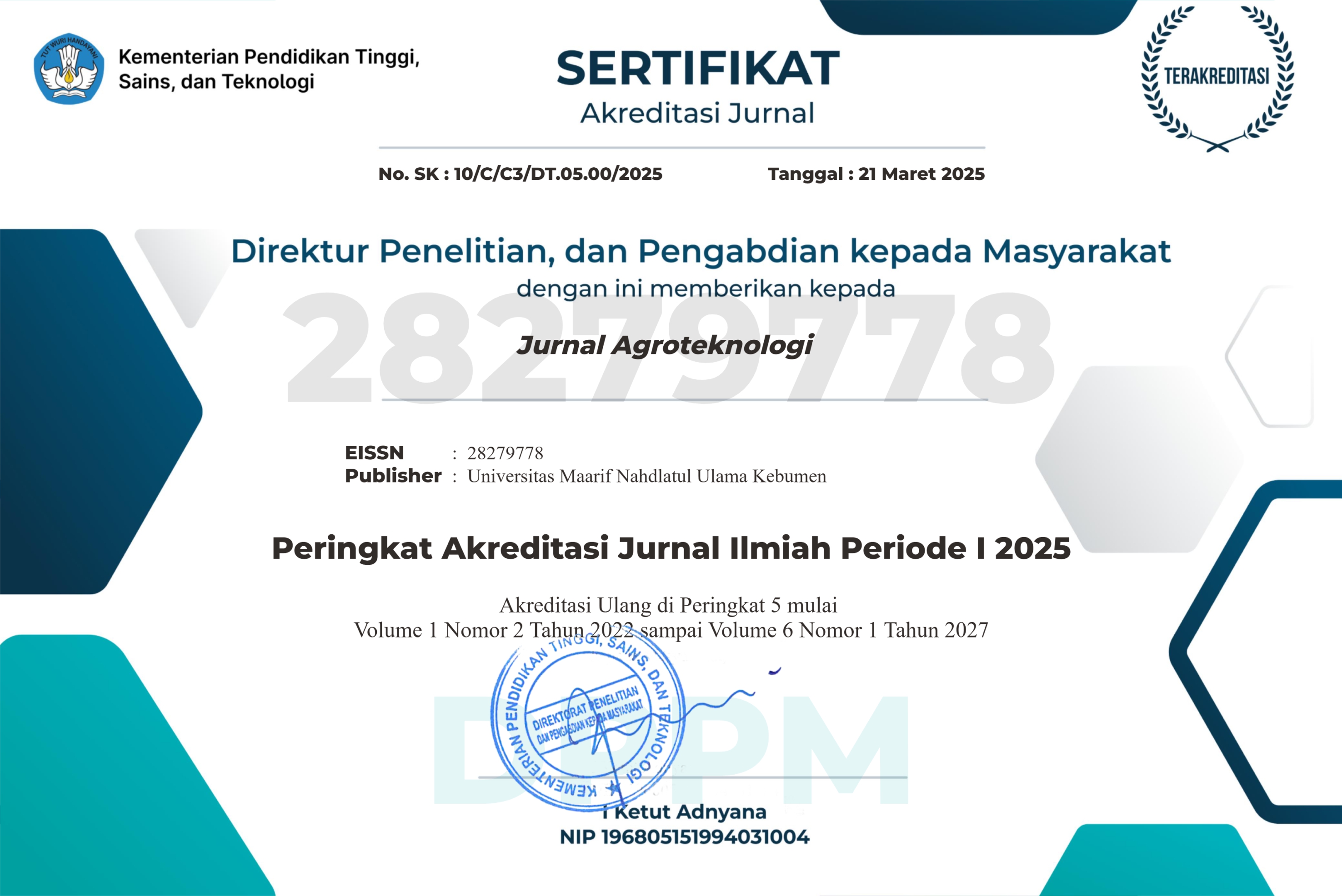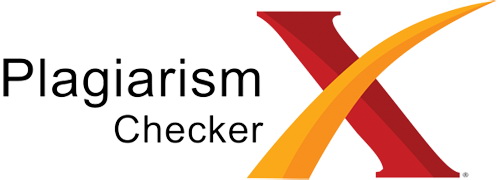PEMANFAATAN BERBAGAI TANAMAN BERWARNA SEBAGAI INDIKATOR ASAM-BASA ALAMI UNTUK PENGUJIAN ASAM LEMAK BEBAS PADA CRUDE PALM OIL (CPO)
DOI:
https://doi.org/10.53863/agronu.v1i02.480Keywords:
indicator, colored plants, anthocyanins, free fatty acids (ALB)Abstract
The study was conducted using a Completely Randomized Design (CRD) consisting of one factor, namely colored plant varieties and indicator concentration consisting of 9 levels, as follows: red spinach 0.15 ml (A), red spinach 0.30 ml (B) . ), 0.45 ml red spinach (C), 0.15 ml purple cabbage (D), 0.30 ml purple cabbage (E), 0.45 ml purple cabbage (F), 0.15 ml secang wood (G ), 0.30 ml sappan wood (H), 0.45 ml sappan wood (I), with two repetitions. Anthocyanins that have been extracted from various types of plants were analyzed first including anthocyanin levels, yield and pH levels. Furthermore, colored plant extracts in alcohol were used as indicators for titration of free fatty acids and comparative analysis was carried out with phenolphthalein (pp) indicator, and visual color changes were observed. This study aims to determine the type of colored plant as a source of anthocyanin which has the highest yield and effective anthocyanin content used as an indicator substitution in the analysis of free fatty acids in Crude Palm Oil (CPO). The results of this study indicate that variations in plant species and indicator concentrations greatly affect anthocyanin and FFA levels. The results of the calculation of Free Fatty Acids with a pp indicator of 0.45 ml of 2.7803% have similarities with using purple cabbage indicator of 0.45 ml of 2.5813%, which is supported by a yield of 34% and anthocyanin content of 0.0472 mg/ ml.
Keywords: indicator, colored plants, anthocyanins, free fatty acids (ALB)
Downloads
Published
How to Cite
Issue
Section
License
Copyright (c) 2022 Desi Nurjanah

This work is licensed under a Creative Commons Attribution-ShareAlike 4.0 International License.
Authors retain copyright and grant the journal right of first publication with the work simultaneously licensed under a Creative Commons Attribution-ShareAlike 4.0 International License that allows others to share the work with an acknowledgment of the work’s authorship and initial publication in this journal











